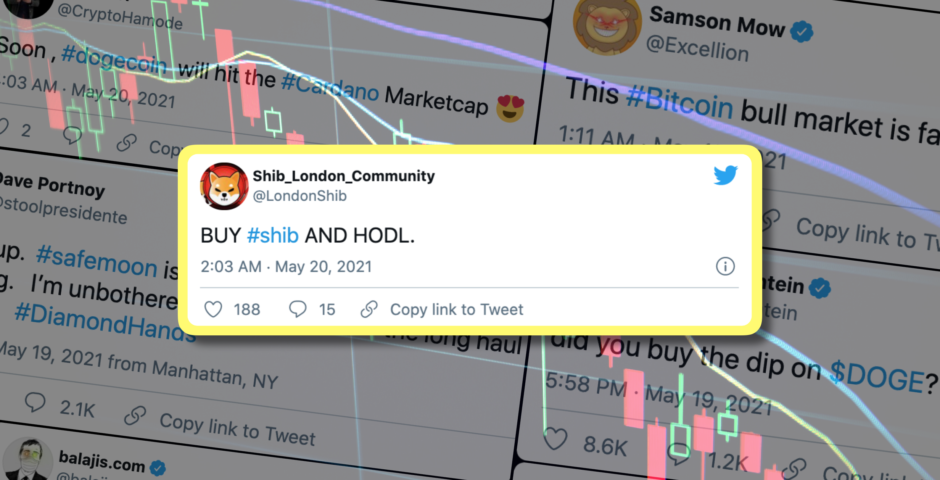
HODL, bull market and nine other crypto-related phrases explained
What is a market cap? 🧢
Whilst all this crypto business is very exciting for amateur traders such as myself, there is an unavoidable sense amongst noobs (again, myself very much included) that although we get the general gist of crypto, we simultaneously have absolutely no idea what is going on. Opening Twitter and being met with a load of jargon from “bear market” to “HODL” can get really confusing for beginners who just want to make a bit of money.
However, it is important to understand some of these phrases. So, what does HODL mean? Is buying the dip a good or a bad thing? And is a blockchain something I should care about? Here is a list of the most commonly used crypto-related phrases for beginners.
Bull market
Put simply, the bull market means that forecasters believe the market is doing well and on an upwards trend. Prices are either on the rise or expected to imminently rise. Therefore…
Bear market
A bear market is the direct opposite of a bull market – prices are going down or predicted to do so.
HODL
There a point when you may feel as if you need to decide between selling off your crypto before you lose any remanence of profit, or HODL. HODL is an abbreviation of Hold On for Dear Life, and essentially means you strap yourself to the crypto rocket and cross your fingers that it takes you on a one-way trip to the moon.
In the same way, to “hold” your crypto is to simply leave it untouched without trading it.
Buy the dip
To buy the dip is to buy crypto when it has dropped or dipped to a lower value. The idea is that by purchasing crypto when it dips in price, you have the potential to see a return if it goes back up in value.
Long/longing
To long a currency is to purchase and keep it with the intention of selling in the future once it has grown in value.
Bitcoin is seen as one of the more stable cryptocurrencies (in that it now doesn’t fluctuate nearly as much as some of the other coins) and as such people will tend to long BTC in the hope that its value will incrementally rise over time.
FOMO
This is likely the most familiar abbreviation on the list as it isn’t specific to crypto. FOMO stands for Fear Of Missing Out and many use it in cryptocurrency discourse when discussing coins that have perceivable potential.
ATH
ATH is an abbreviation that stands for All-Time High. When a currency reaches its highest point since inception, you’ll see this phrase being thrown around Twitter by cryptobros.
Leverage
To leverage when trading is to borrow money from others with the agreement to make more money. Once money has been made, the money is returned and a percentage of the winnings is kept.
There is as much potential to amplify your profits as there is your losses, and leverage trading is known to be particularly risky because of this.
Market cap
The market cap of a cryptocurrency is the total value of every coin that has been mined. It is calculated by multiplying the quantity of every coin in circulation by the market price per coin.
Because of this, the market cap of a coin can fluctuate quickly as the number changes every time new blocks are mined. Bitcoin currently has the highest market cap at over £500 billion.
Stake/staking rewards
Staking is holding crypto in your wallet. By doing so, you assist the operations of the blockchain network. They then reward you for this by paying you small increments of crypto, similar to interest from a bank.
Some cryptos pay staking rewards whilst others do not.
Blockchain
A blockchain is a type of database, a computing power made up of many separate systems globally. Bitcoin, like the majority of other cryptocurrencies, is a blockchain that is not centralised – which means that no one person has control and it is near impossible to destroy.
Related stories recommended by this writer:
• ‘I had £7,500 in profit’: Meet the young people getting minted from Dogecoin
• Ethereum: What is it, how do I buy it and will Ethereum make me rich?
• How to buy Dogecoin in the UK: A step by step guide for beginners





















